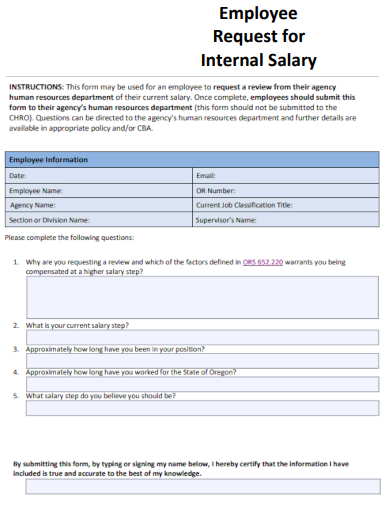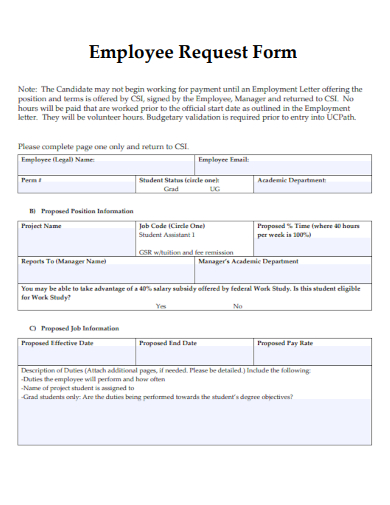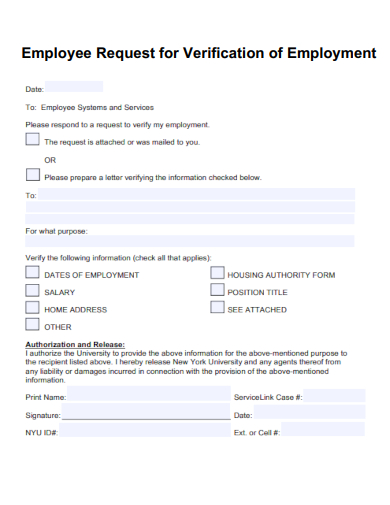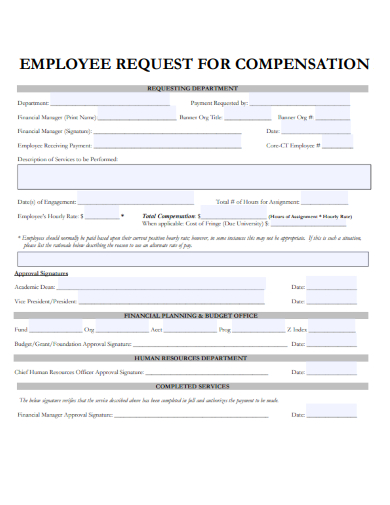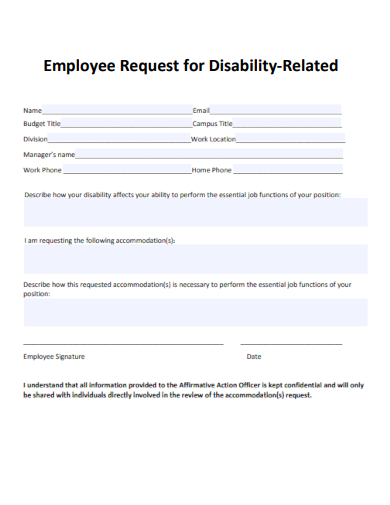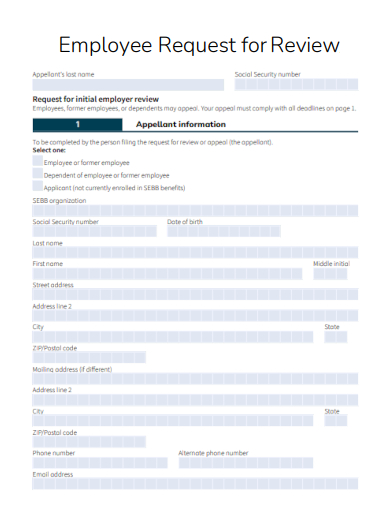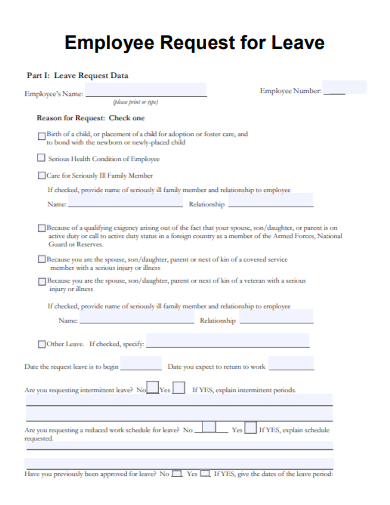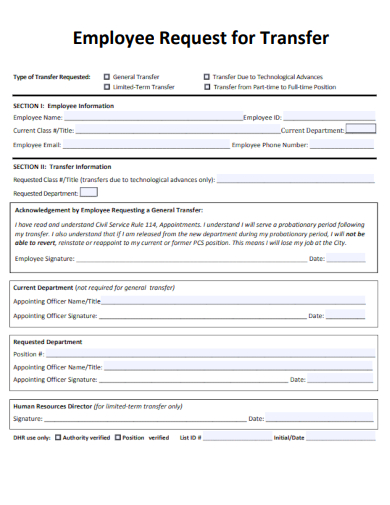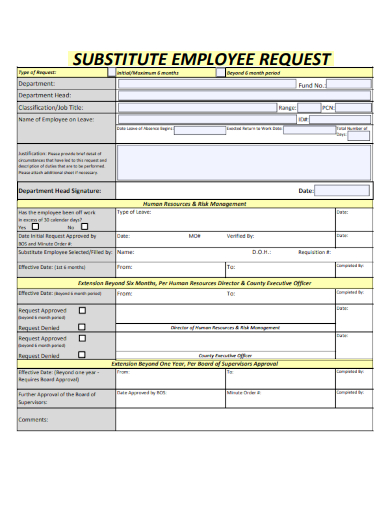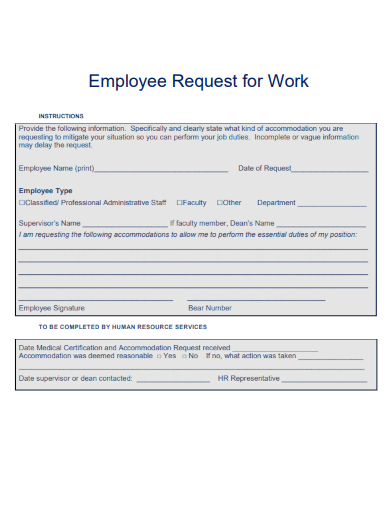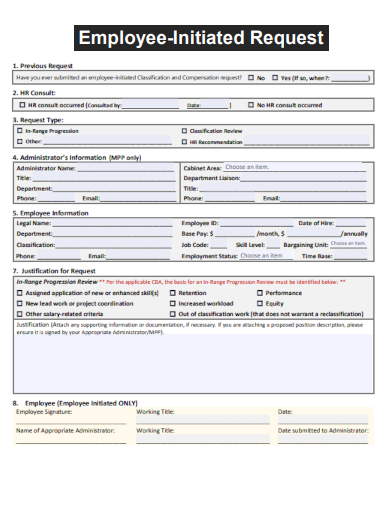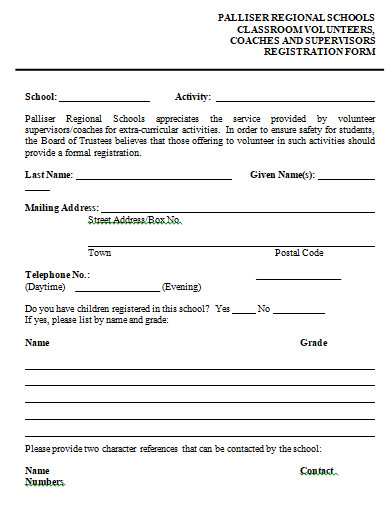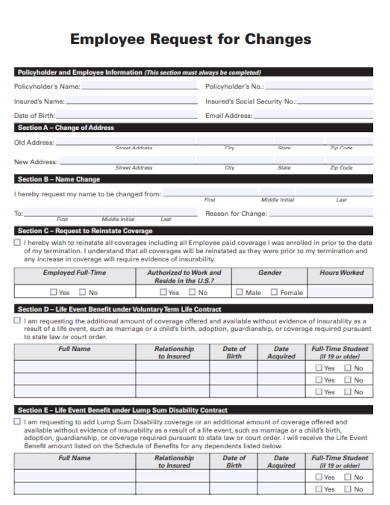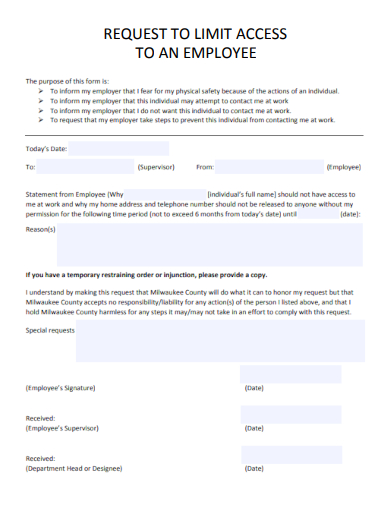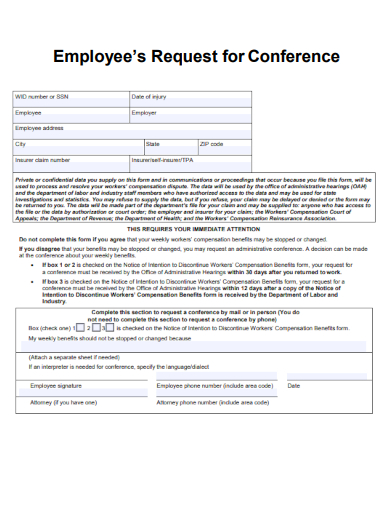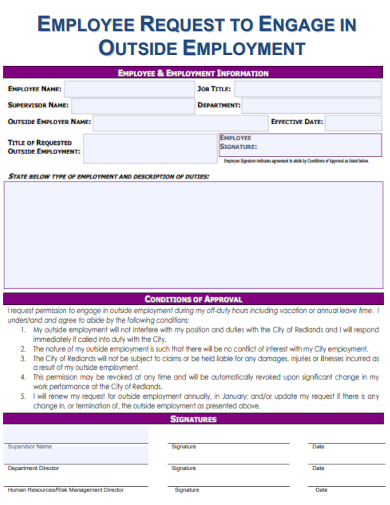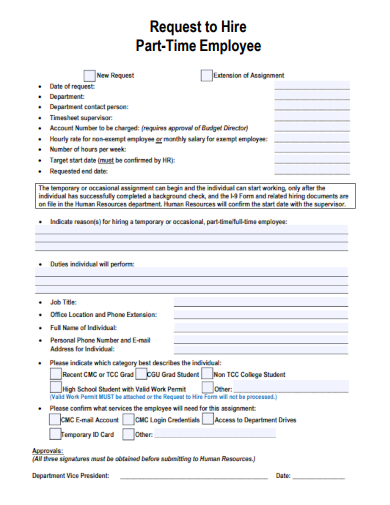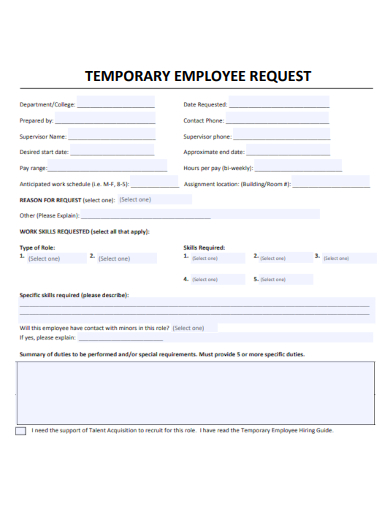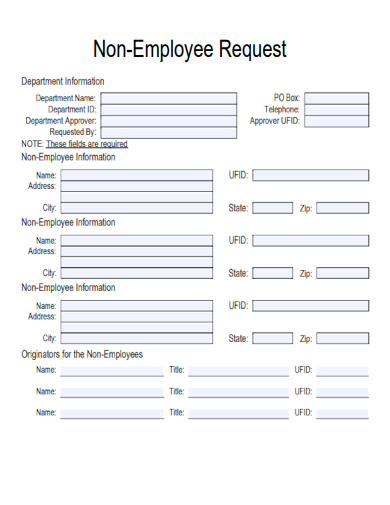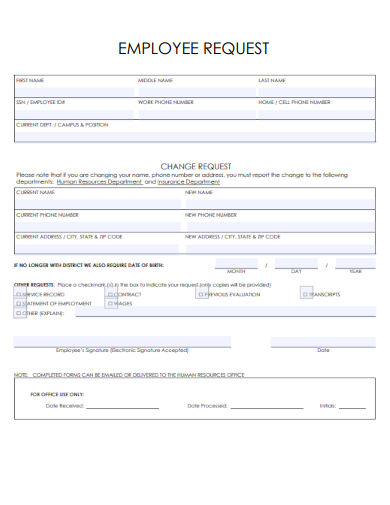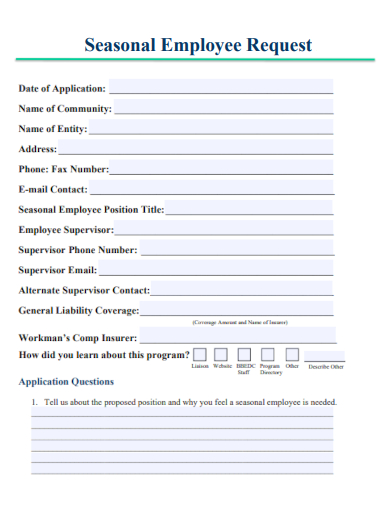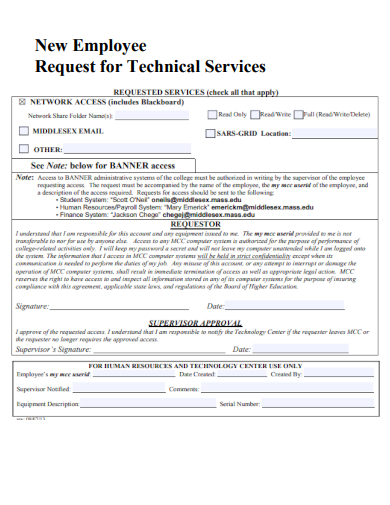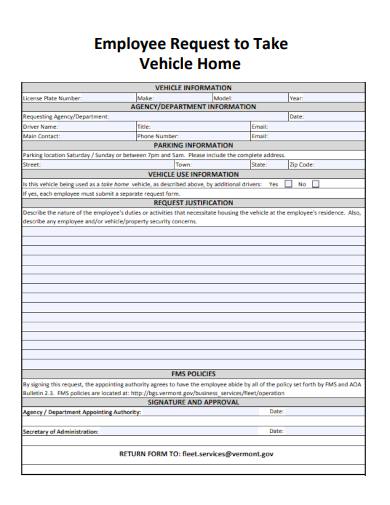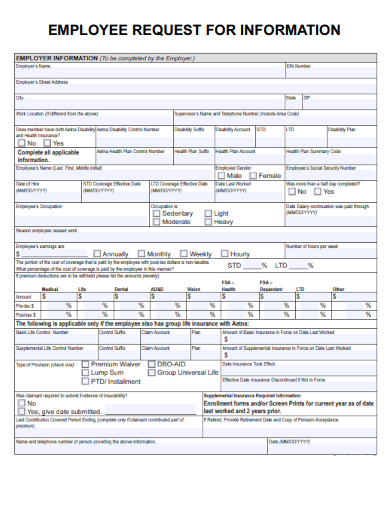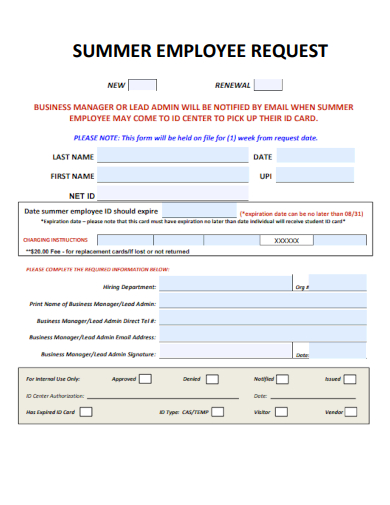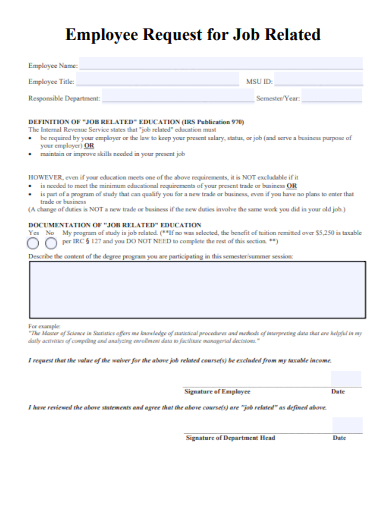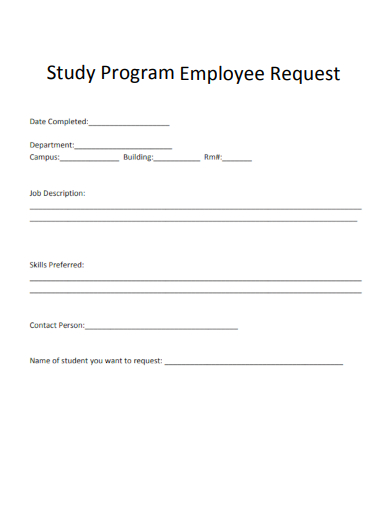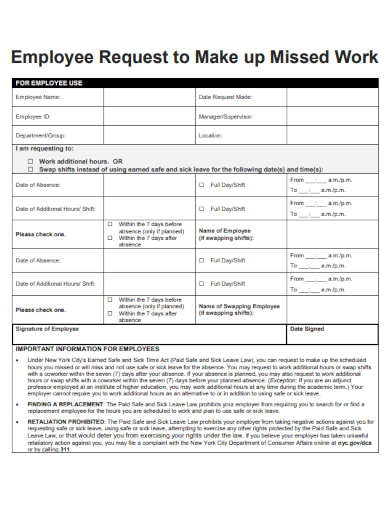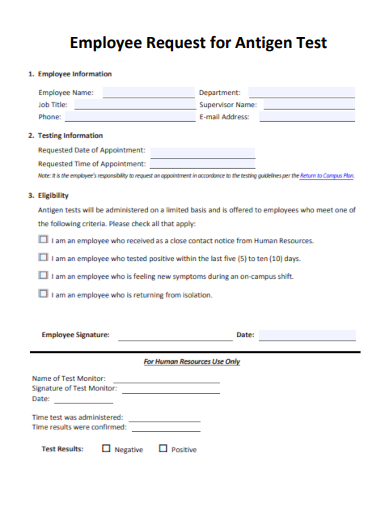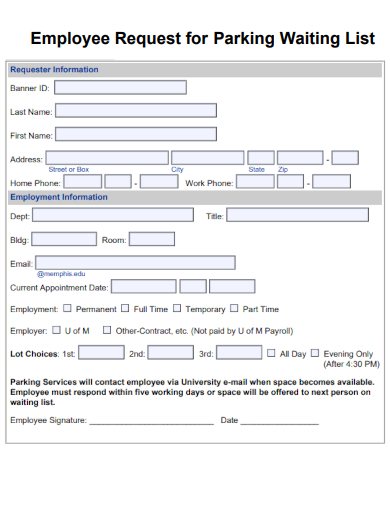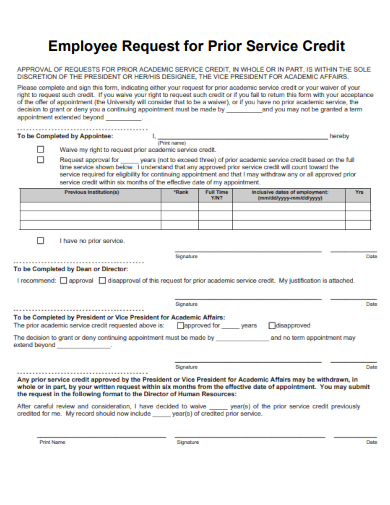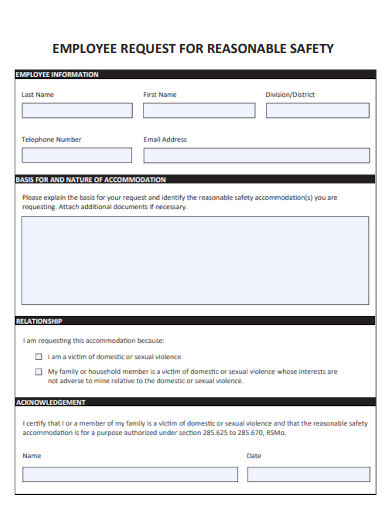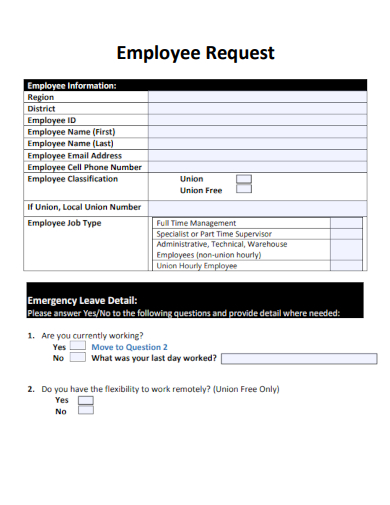In the modern workplace, employee satisfaction, and engagement have emerged as pivotal factors in organizational success. A significant aspect of this relationship lies in the operations management of employee requests. These requests can range from simple monthly schedule adjustments to more complex matters like remote work arrangements or professional development opportunities. Effectively handling employee requests not only demonstrates a commitment to employee well-being but also has the potential to enhance productivity skills and overall organizational performance evaluation. Employee requests serve as a vehicle for employees to express their needs, concerns, and aspirations. When organizations actively listen to and address these requests, they demonstrate respect for their employees’ individuality and value their contributions.
FREE 37+ Employee Request Samples
1. Sample Refusal Of Employee Request For Early Raise Template
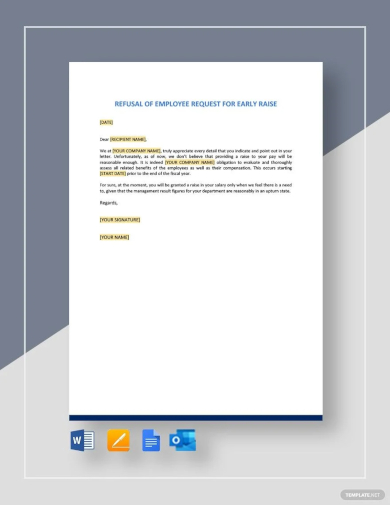
2. Sample Employee Request for Internal Salary Template
3. Sample Employee Request Form Template
4. Sample Employee Request for Verification of Employment Template
5. Sample Employee Request for Compensation Template
6. Sample Employee Request for Accommodation Template
7. Sample Employee Request for Disability-Related Template
8. Sample Employee Request for Review Template
9. Sample Employee Request for Leave Template
10. Sample Employee Request for Transfer Template
11. Sample Substitute Employee Request Template
12. Sample Employee Request for Work Template
13. Sample Employee Initiated Request Template
14. Sample Employee Request for Course Approval Template
15. Sample Employee Request for Changes Template
16. Sample Request to Limit Access to an Employees Template
17. Sample Employees Request for Conference Template
18. Sample Employee Request to Outside Employment Template
19. Sample Request to Hire Part-Time Employee Template
20. Sample Temporary Employee Request Template
21. Sample Employee Request Basic Template
22. Sample Non-Employee Request Template
23. Sample Employee Request Formal Template
24. Sample Seasonal Employee Request Template
25. Sample New Employee Request for Technical Services Template
26. Sample Employee Request to Take Vehicle Home Template
27. Sample Employee Request For Consideration Template
28. Sample Employee Request for Information Template
29. Sample Summer Employee Request Template
30. Sample Employee Request for Job Related Template
31. Sample Study Program Employee Request Template
32. Sample Employee Request to Make up Missed Work Template
33. Sample Employee Request to Change Personal Information Template
34. Sample Employee Request for Antigen Test Template
35. Sample Employee Request for Parking Waiting List Template
36. Sample Employee Request for Prior Service Credit Template
37. Sample Request for Reasonable Safety Template
38. Sample Employee Request Standard Template
What is Employee Request?
An employee request refers to a formal or informal communication made by an employee to their employer, supervisor, or human resources department, expressing a desire or need related to various aspects of their agency employment contract. Employee requests can cover a wide range of topics, such as work schedule adjustments, leave requests, requests for accommodations, changes in job responsibilities, professional development plan opportunities, salary proposal negotiations, and more.
How To Make Employee Request?
Addressing employee requests effectively demonstrates an organization’s commitment to employee well-being, engagement, and satisfaction, thereby contributing to a positive workplace environment and improved overall organizational performance. Making an employee request involves clear communication and adherence to organizational procedures. Here’s a step-by-step guide on how to effectively make an employee request:
Step 1- Identify the Request
Define your specific request clearly. Is it related to your work schedule, time off, professional development, workplace accommodations, or something else? Having a well-defined request will help ensure that your message is clear to the recipient.
Step 2- Understand Company Policies
Familiarize yourself with your company’s policies and procedures for making employee requests. These policies may outline the preferred method of communication, timeline outline, and any necessary forms or documentation. Determine the appropriate channel through which to make your request. It could be through an online employee portal, email, a formal written letter, a designated request form, or even an in-person conversation.
Step 3- Prepare Relevant Information
Gather any relevant information or documentation that supports your request. For instance, if you’re requesting time off, have the dates, reason, and any backup plans ready. Write a clear and concise request. Include the nature of your request, the reason for making it, and any relevant details. Be polite and professional in your communication.
Step 4- Address the Right Person
Send your request to the appropriate recipient. This could be your immediate supervisor, HR department, or another designated contact, depending on the nature of the request. Use a respectful and professional tone in your request. Clearly state your request and the rationale behind it. If applicable, highlight how your request aligns with the company’s goals or your job responsibilities.
What kinds of requests can I make as an employee?
Employees can make a wide range of requests, including changes in work schedule, time-off requests, requests for professional development opportunities, workplace accommodations, salary adjustments, and more.
How long does it take for my request to be processed?
The processing time for employee requests can vary based on the complexity of the request, company policies, and workload. Simple requests might be processed relatively quickly, while more complex requests might require additional time for assessment.
Should I provide any supporting documentation with my request?
For certain requests, such as workplace accommodations or medical leave, providing supporting documentation is essential. Medical certificates, doctor’s notes, or other relevant documents can help validate your request.
In conclusion, the significance of employee requests cannot be overlooked in today’s competitive business landscape. Addressing these requests goes beyond fulfilling practical needs; it signifies an organization’s commitment to its employees’ well-being and growth. Recognizing the value of employee input, enhancing job satisfaction, boosting engagement, tailoring the employee experience, and cultivating a positive organizational culture are all outcomes of effectively managing and fulfilling employee requests.
Related Posts
Event Program
OMR Sheet
Building Inspection Report
Employment Certificate
Teacher Lesson Plan
Deed of Assignment
Contract Termination Letter
Student Research Proposal
Diet Plan
Housekeeping Resume
Marriage Proposal Letter
Nursing Resume
Fund Transfer Letter
Purchase Order Cancellation Letter
Certificate of Service

